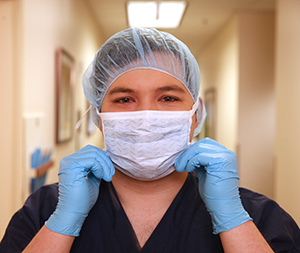Staff Ed: Airborne Transmission
Transmission-Based Precautions: Airborne
Transmission-based precautions help prevent the spread of certain infections. Airborne precautions are one type of transmission-based precaution. Always use airborne precautions in addition to standard precautions.
When to use airborne precautions
Some germs can float through the air on tiny particles. They can stay in the air for a long time and travel long distances. Use airborne precautions with patients known or suspected to be infected with any of the following:
Active tuberculosis (TB)
Measles
Varicella (chickenpox) or wherever a patient has a vesicular rash of unknown origin
How to use airborne precautions
The patient should be placed in a private room with a private bathroom and special air handling. If this can’t be done, check with your facility’s infection control department. Also:
Wear approved respiratory protection when in the patient’s room if the patient is suspected of having active tuberculosis, or if you are not immune to measles or chickenpox and must care for an infected patient.
Put on respiratory protection before entering a restricted room. Take it off only after leaving the room. Visitors must also wear protection.
Change your facemask if it becomes soiled. Dispose of it in a plastic bag and then in the trash.
Keep the room’s doors and windows closed at all times.
Allow only essential people (as defined by your facility) to enter the room.
Teach the patient to cough and sneeze into tissues.
Transport the patient only when you absolutely must. Have the patient wear a surgical mask. Alert the receiving department.
Protecting yourself with a respirator
Wear the respirator approved by your facility.
Ask whether the respirator needs to be fit-tested before you first wear it. This test makes sure that the respirator mask fits right.
Fit-check the respirator every time you put it on. You will be shown how to do a fit-check.
Put the respirator on before entering a restricted room. Take it off only after leaving the room.
Each respirator should be used by one person only and should not be shared.
Updated:
April 20, 2018
Sources:
Monkeypox, Up To Date
Reviewed By:
Freeborn, Donna, PhD, CNM, FNP,Hurd, Robert, MD
